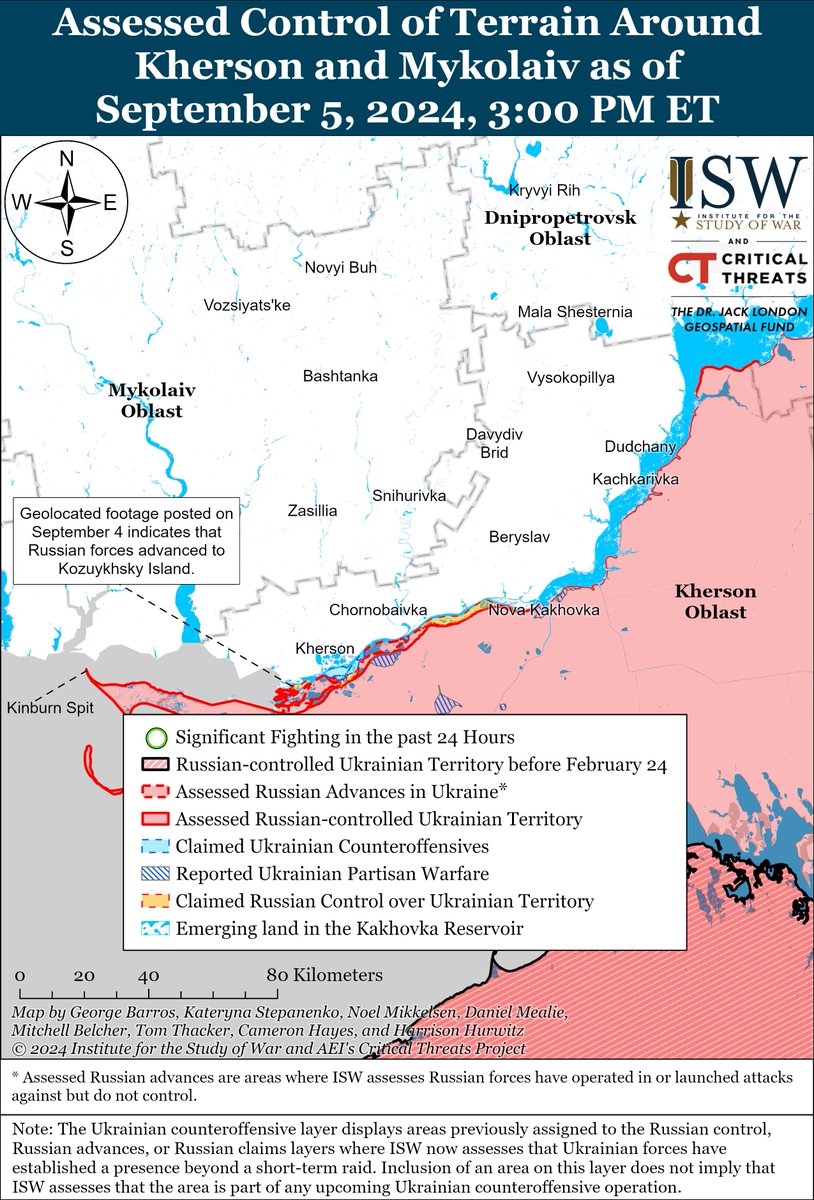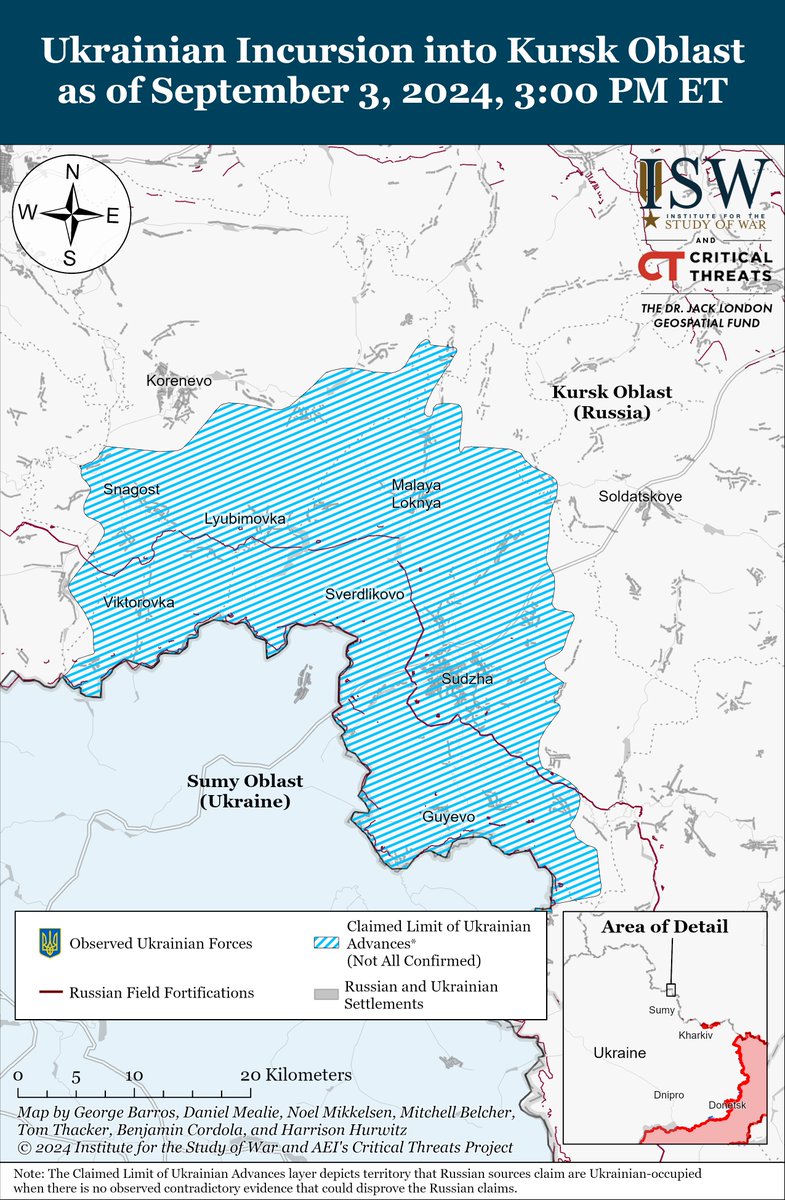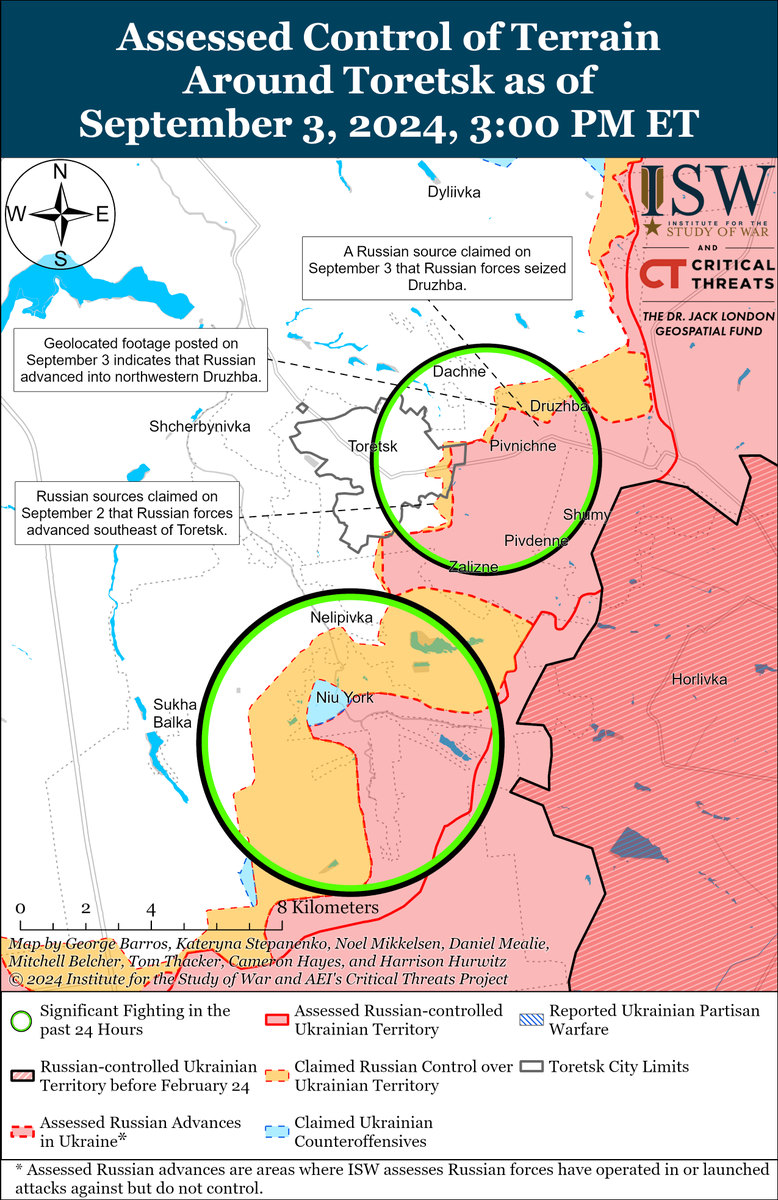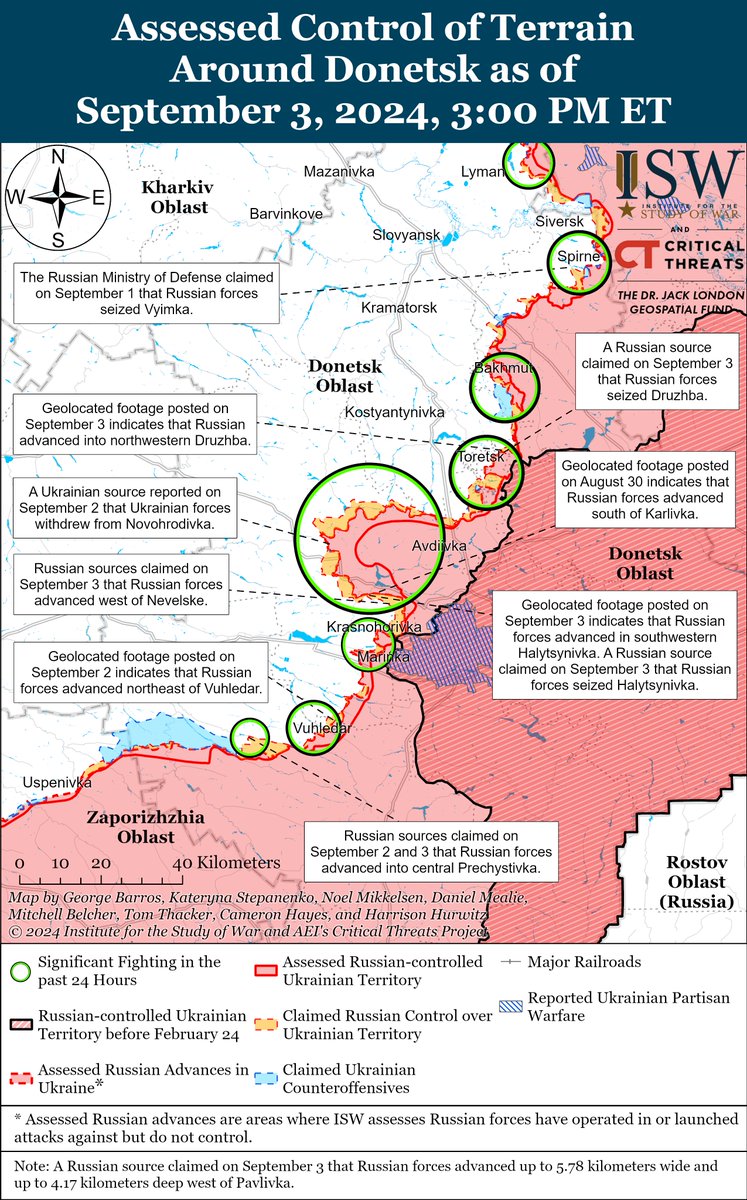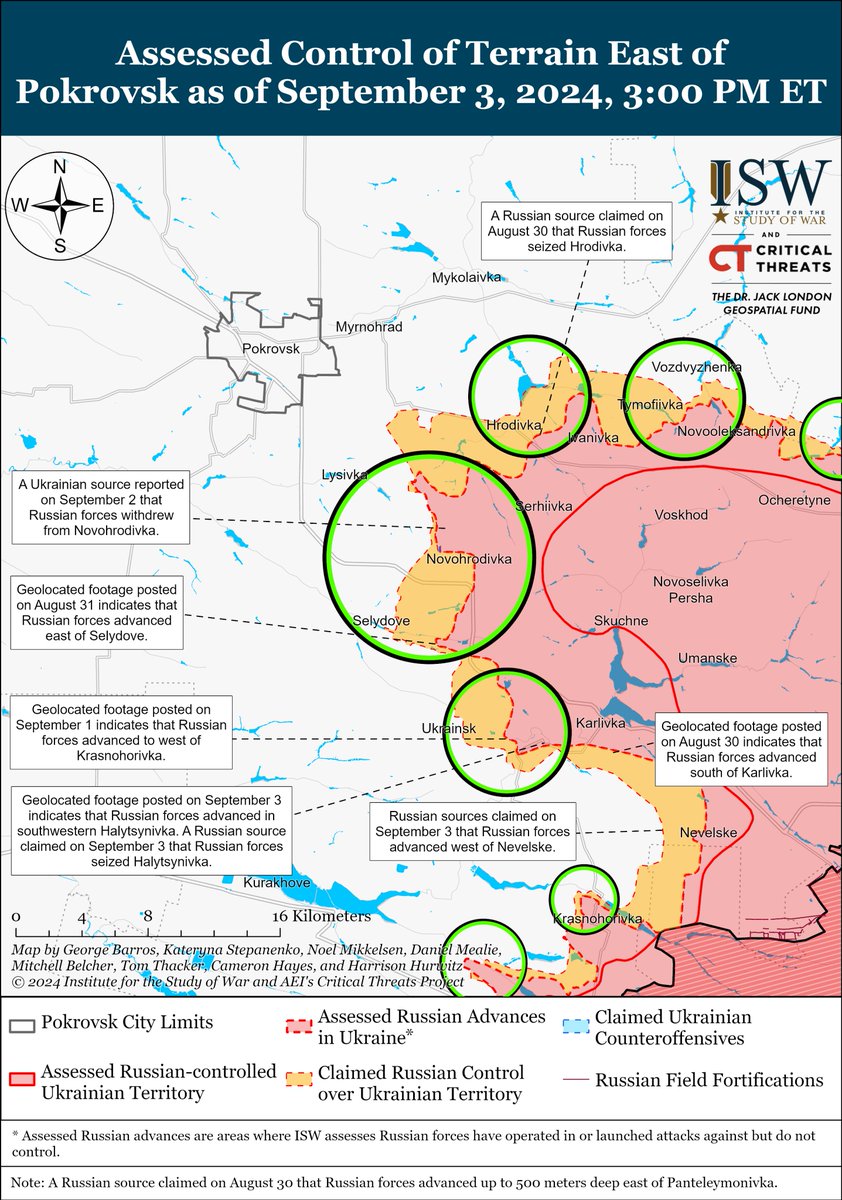NEW: Russia appears to be relying on several countries, including India, Serbia, and the People’s Republic of China (PRC), as part of its efforts to evade Western sanctions.
More key takeaways ⬇️🧵(1/5)


More key takeaways ⬇️🧵(1/5)



2/ Russian forces struck civilian infrastructure in Lviv City, Lviv Oblast, and Kryvyi Rih, Dnipropetrovsk Oblast during another mid-sized combined drone and missile strike on the night of September 3 to 4.
3/ Ukrainian authorities are investigating another report of apparent Russian war crimes against Ukrainian soldiers.
German Chancellor Olaf Scholz announced on September 4 that Germany will provide 17 additional IRIS-T air defense systems to Ukraine by 2026.
German Chancellor Olaf Scholz announced on September 4 that Germany will provide 17 additional IRIS-T air defense systems to Ukraine by 2026.
4/ Ukrainian officials announced a series of resignations and appointments among senior members of the Ukrainian cabinet on September 3 and 4.
5/ The Russian Ministry of Defense (MoD) continues to portray itself as suitably addressing its obligations towards Russian veterans of the war in Ukraine.
Russian Offensive Campaign Assessment, September 4, 2024: isw.pub/UkrWar090424

Russian Offensive Campaign Assessment, September 4, 2024: isw.pub/UkrWar090424

• • •
Missing some Tweet in this thread? You can try to
force a refresh






